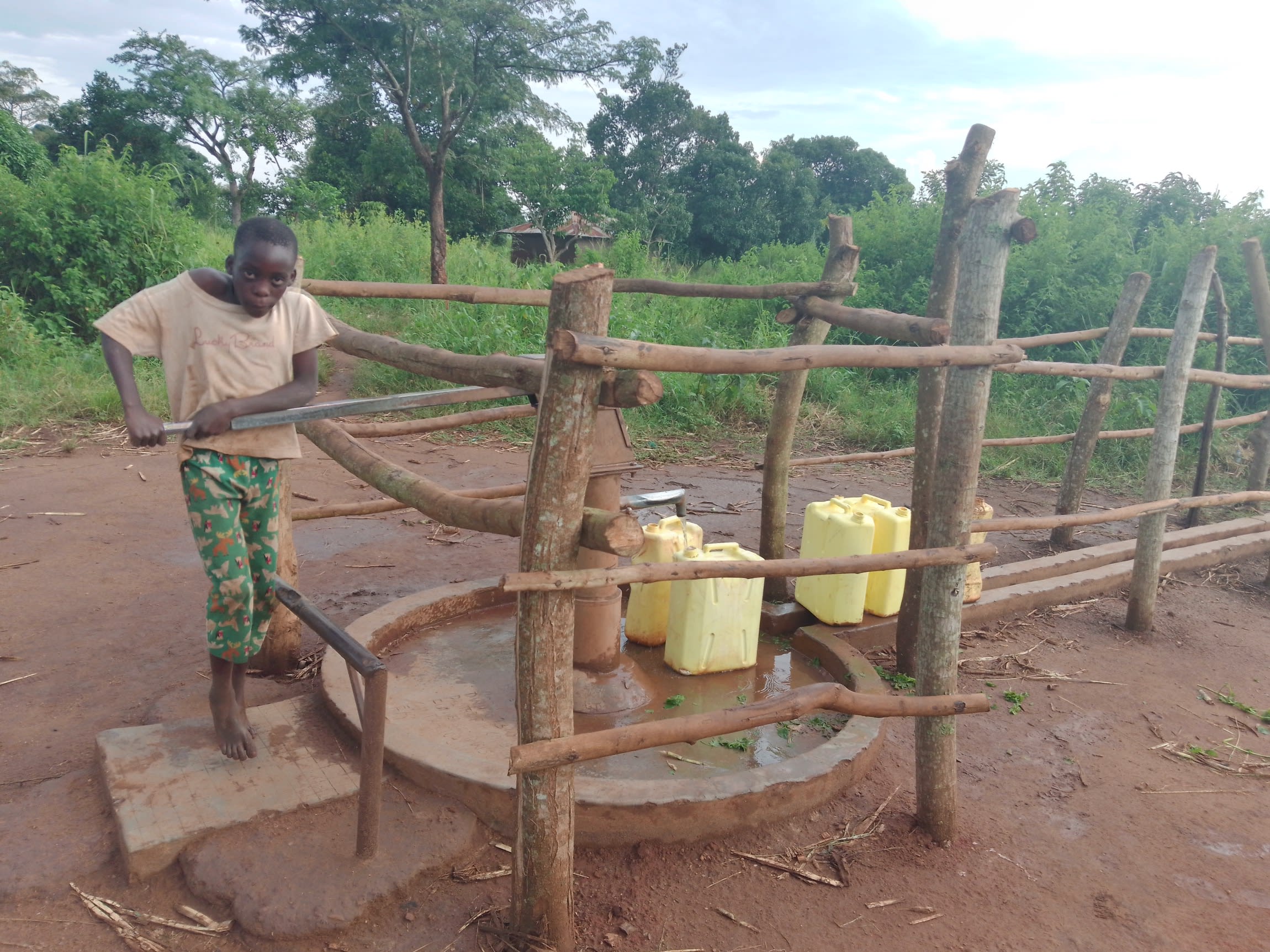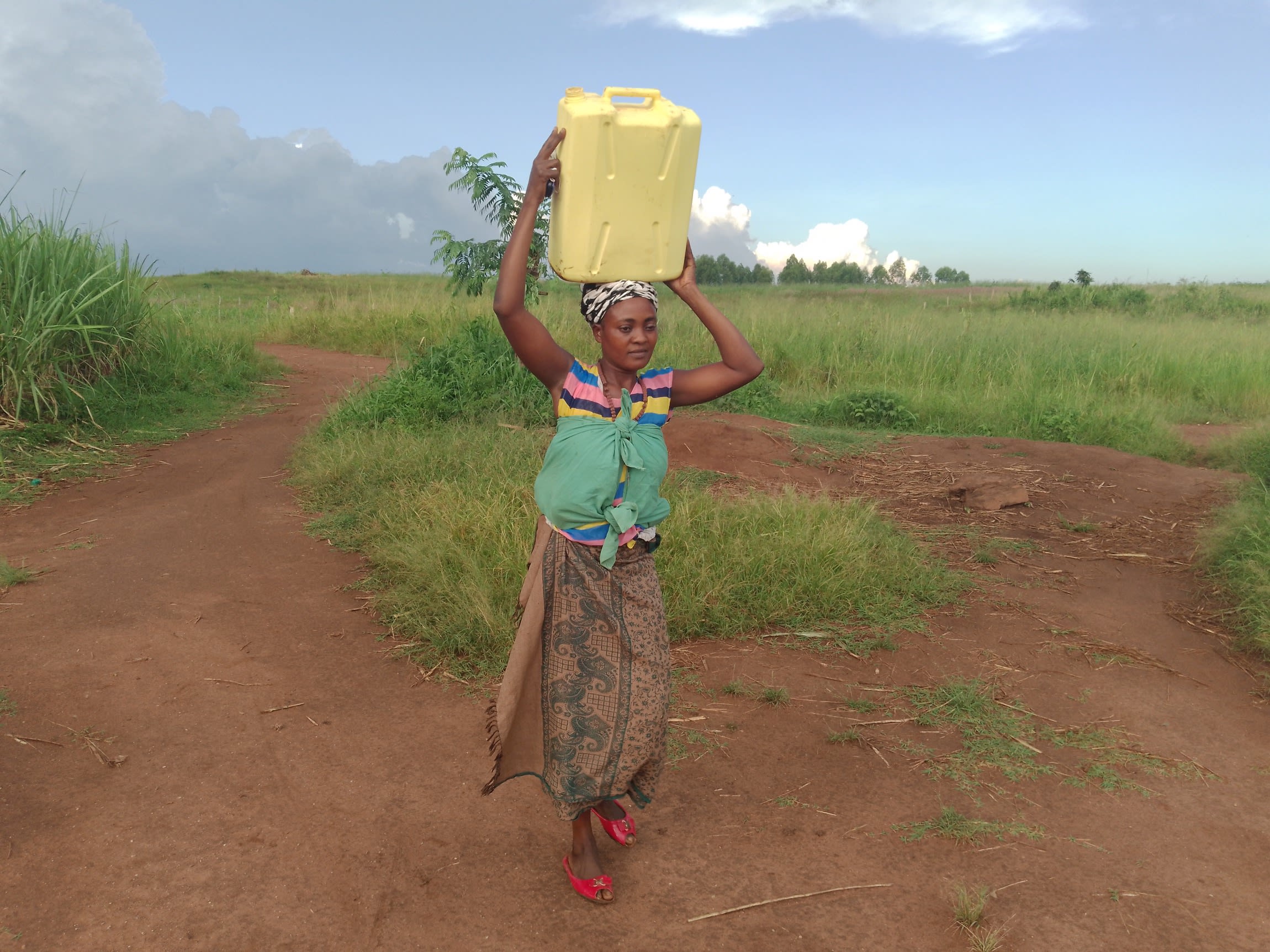With water as scarce and far away as it is, it's no wonder the people of Kyamaiso quarrel over water.
"As a chairperson of [the] local council, at least every week I have an offense to resolve as a result of a fight connected to [the] water point," said Christopher Asiimwe, 57, who leads the village council. "The water point has no resting time since the community has to draw water as late as 10:00 p.m. so that every home receives at least 40 liters of water to take them through the day."
Most often, children are sent to fetch water for their families early in the morning, but they won't return until midday, and they might return without any water, or even the container they left with. Parents often accuse their children of being irresponsible. But this isn't the case.
"Most times, the children fail to get water due to the crowding," Christopher explained. "The elder people overpower the children at the water point."

This was echoed by 11-year-old Lampard, who fetches water for his family (shown at the well in the picture above). "As a child, while at the water point, the elder people don't like queuing who end up using force to draw water and this increases on our time spent at the water point, other children and elder people steal our jerrycans while at the source."
The fighting, coupled with the long distance, makes acquiring water an incredibly unpleasant experience for Lampard. From his home, the main well is three kilometers (1.86 miles) away.
"I have always encountered challenges moving long distances," Lampard said. "[It] takes me about four hours, including waiting time. Though I use a bicycle to collect water, the nature of our road is bad, with a steep slope. I remember last week when I fell with the bicycle and all the jerrycans got broken and my parents beat me."
As difficult as fetching water is for Lampard, it's also difficult for a household to run without water. Beatrice Ayesiga, a 37-year-old single mother with five children (three girls and two boys), knows this all too well.

"I had started my agricultural farming project, which did not succeed due to the water challenge," said Beatrice (shown above on the path to fetch water). "All my birds and pigs died because I had challenges finding water for mixing their feeds, and even [for] drinking. I did not complete the poultry house, too."
Beatrice told us that when she had just given birth at home, she had no one to fetch water or do laundry for her until she'd healed. So her newborn's bedding went without washing for an entire week.
"Due to overcrowding and the long distances to and from the water point, including the queue time, I have to use water sparingly as I only manage to get two 20-liter jerrycans per day for all the domestic work," Beatrice explained.
A close, reliable source of safe water will serve to lessen the desperation in Kyamaiso, which will hopefully help people be kinder to one another. Beatrice and Lampard's lives will be immediately easier, and their health will improve.
Here’s what we’re going to do about it:
New Borehole
This new borehole is an exciting opportunity for this community! We work with the community to determine the best possible sites for this well.
We conducted a hydrogeological survey and the results indicated the water table is an ideal candidate for a borehole well. Due to a borehole well's unique ability to tap into a safe, year-round water column, it will be poised to serve all of the water needs for this community, even through the dry months.
Community members will help collect the needed construction materials such as sand, rocks, and water for mixing cement. They will also provide housing and meals for the work team, in addition to providing local laborers. We will complement their materials by providing an expert team of artisans and drilling professionals, tools, hardware, and the hand-pump. Once finished, water from the well will then be used by community members for drinking, handwashing, cooking, cleaning, and much more.
Training
Training’s main objectives are the use of latrines and observing proper hygiene practices since these goals are inherently connected to the provision of clean water. Open defecation, water storage in unclean containers and the absence of hand-washing are all possible contaminants of a household water supply. Each participating village must achieve Open Defecation Free status (defined by one latrine per household) prior to the pump installation for this borehole well.
This social program includes the assignment of one Community Development Officer (CDO) to each village. The CDO encourages each household to build an ideal homestead that includes: a latrine, a handwashing facility, a separate structure for animals, a rubbish pit and a drying rack for dishes.
We also implement the Community-Led Total Sanitation (CLTS) approach with each of our village partners. This aims to improve the sanitation and hygiene practices and behaviors of a village. During these sessions, village leaders naturally emerge and push the community to realize that the current practices of individual households – particularly the practice of open defecation – are not only unhealthy, but affect the entire village. CLTS facilitates a process in which community members realize the negative consequences of their current water, sanitation and hygiene behaviors and are inspired to take action. Group interactions are frequent motivators for individual households to build latrines, use them, and demand that other households do the same.
Improved Sanitation
The aim is that all households own an improved latrine. Many households do not use a latrine but use the bush. Due to open defecation, feces are spread all over the village. This leads to waterborne diseases and contamination of groundwater and surface water. Our aim is that the community is able to live a healthy life free of preventable diseases. We endeavor that at the end of our presence in the community, people will have both access to sustainable, clean water and access to sanitation. We have now organized families to form digging groups for latrine construction, and empowered them with tools to use.

 Borehole Well and Hand Pump
Borehole Well and Hand Pump
 Rehabilitation Project
Rehabilitation Project


























